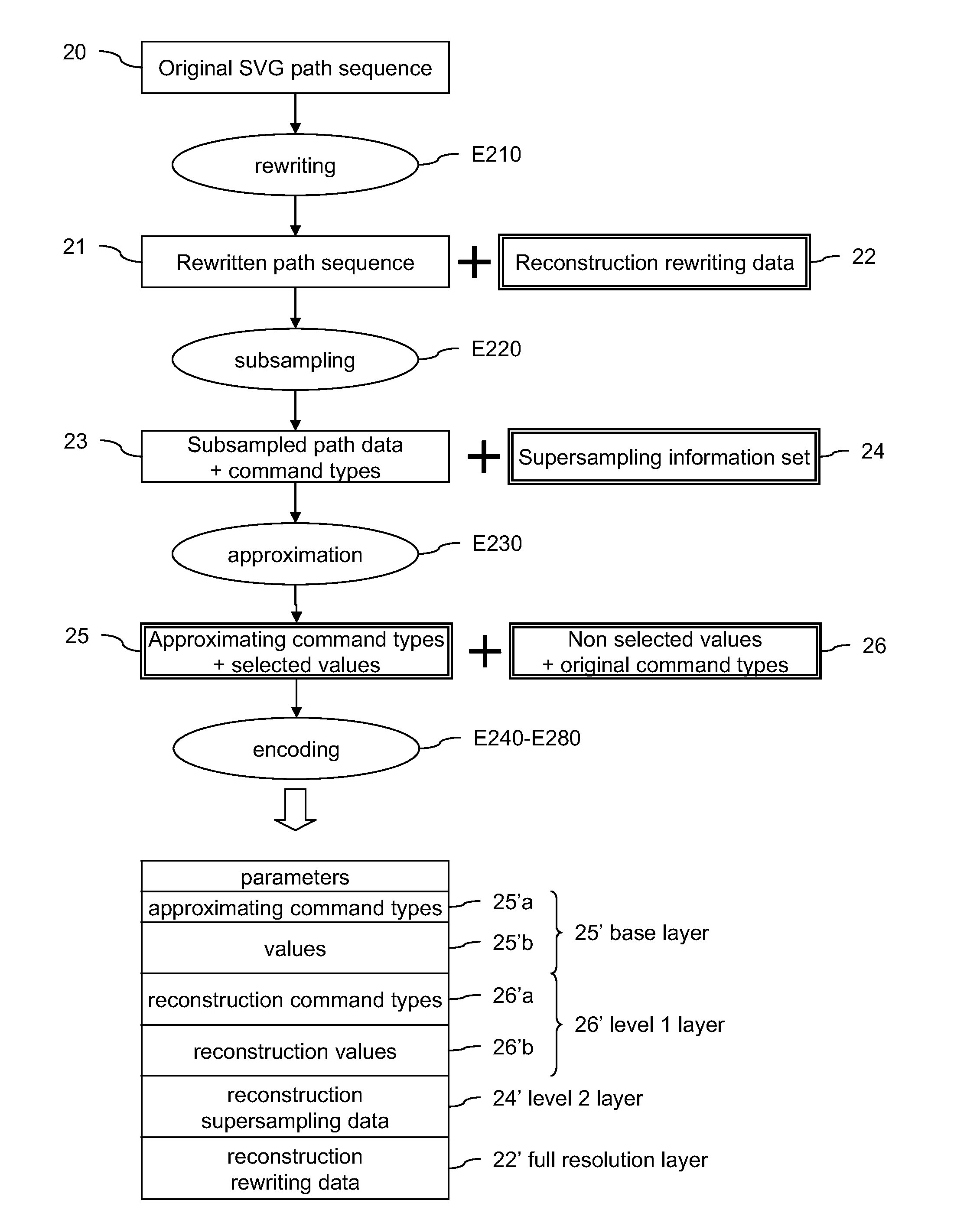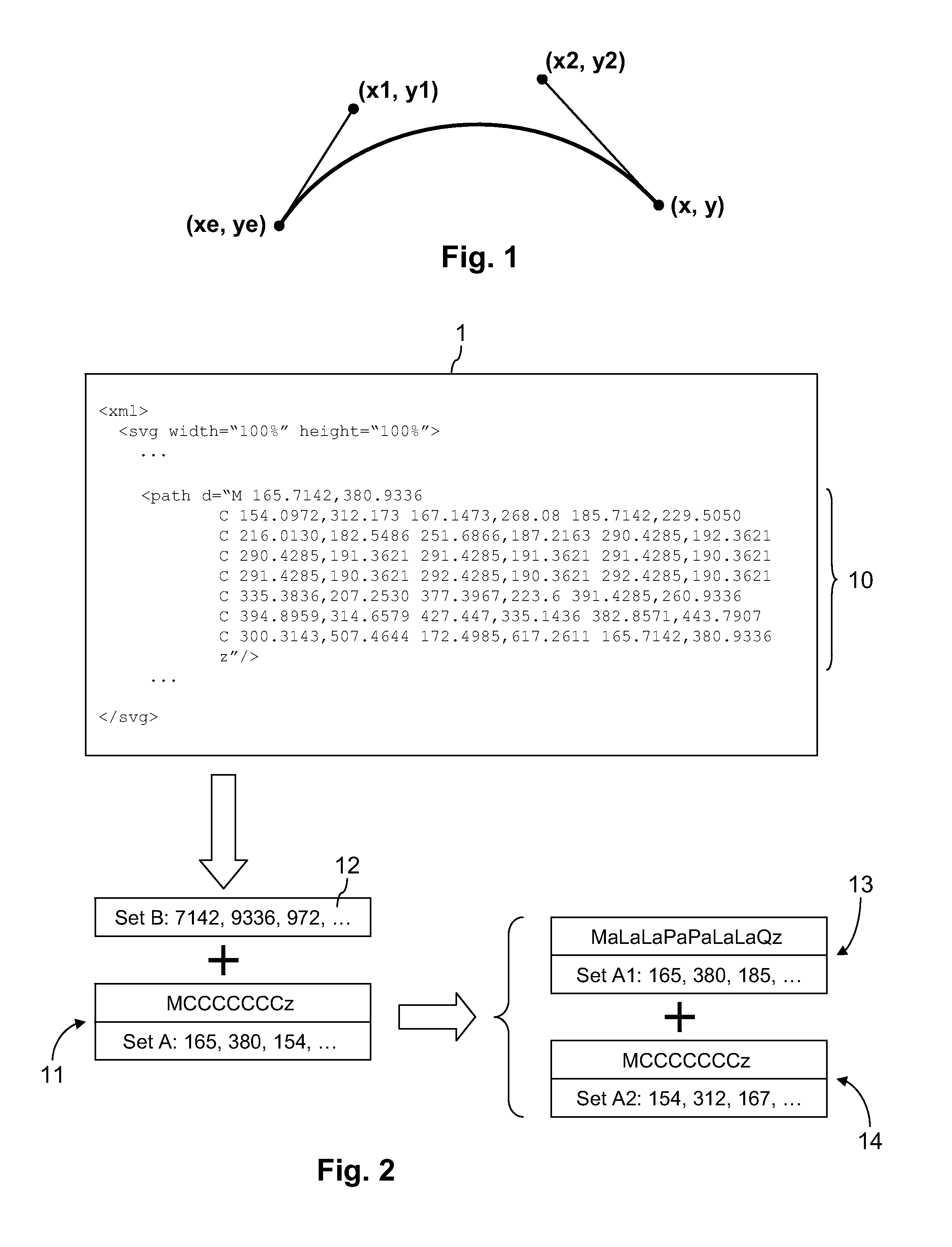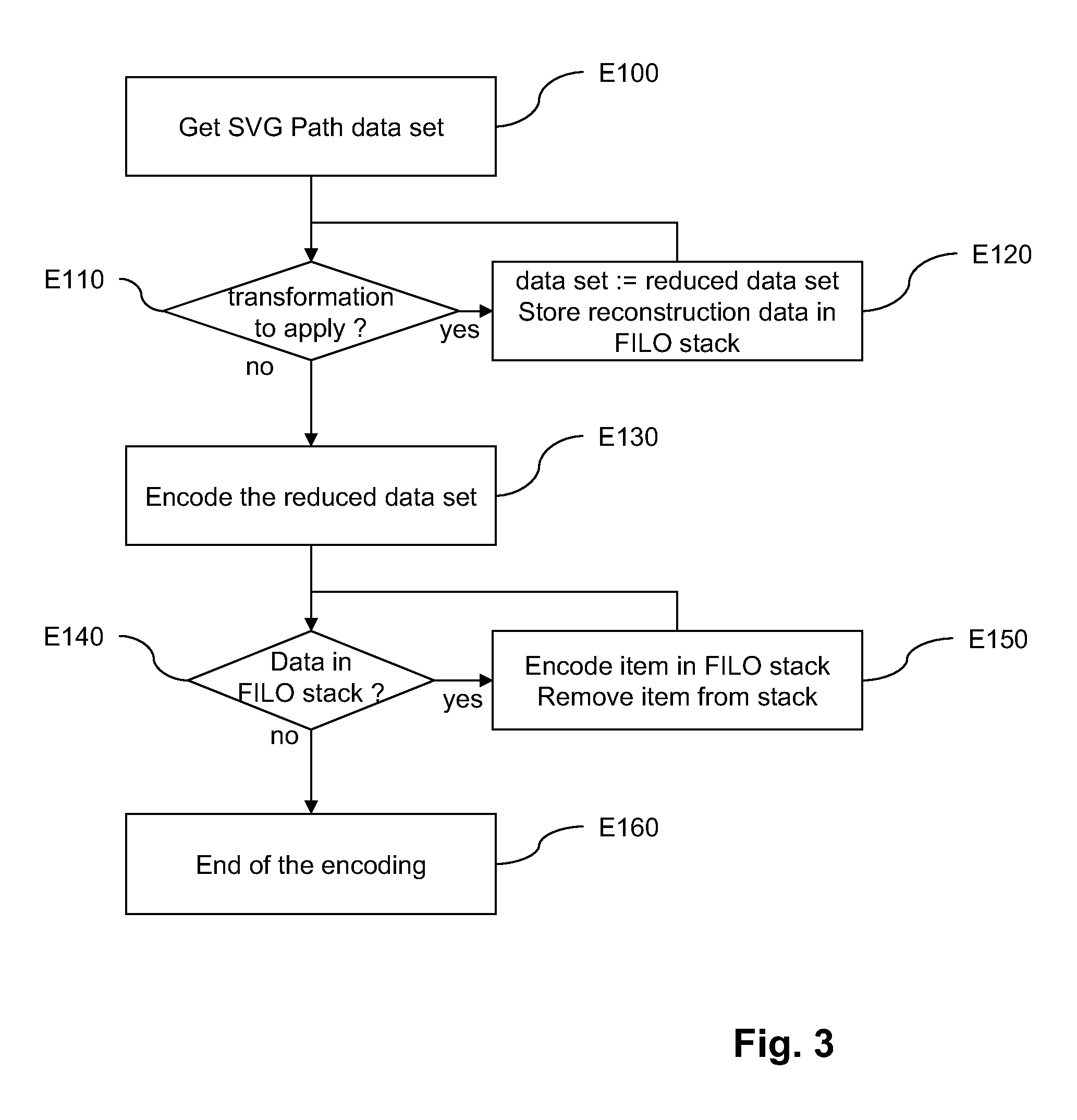Method of encoding and decoding a graphics path sequence into a layered scheme
- Summary
- Abstract
- Description
- Claims
- Application Information
AI Technical Summary
Benefits of technology
Problems solved by technology
Method used
Image
Examples
Embodiment Construction
[0124]An illustration of the invention is first given based on the exemplary SVG document 1 depicted in FIG. 2.
[0125]The SVG document 1 comprises an SVG element of “path” type, the attribute “d” of which defining an original path sequence 10.
[0126]The path is a closed curve consisting of seven cubic Bezier curves identified by the “C” draw command. The final “z” command closes the draw with the first point set in the “M” command.
[0127]According to the invention, the encoding of this SVG path comprises the following steps:
[0128]transforming at least one original draw command into an approximating draw command according to a geometrical approximation of the corresponding original portion of a drawing (a portion of the graphic represented by the SVG path), to obtain a reduced sequence;
[0129]encoding said reduced sequence into an encoded reduced sequence; and
[0130]encoding a reconstruction information set representing the difference between the reduced sequence and the original sequence...
PUM
 Login to View More
Login to View More Abstract
Description
Claims
Application Information
 Login to View More
Login to View More - R&D
- Intellectual Property
- Life Sciences
- Materials
- Tech Scout
- Unparalleled Data Quality
- Higher Quality Content
- 60% Fewer Hallucinations
Browse by: Latest US Patents, China's latest patents, Technical Efficacy Thesaurus, Application Domain, Technology Topic, Popular Technical Reports.
© 2025 PatSnap. All rights reserved.Legal|Privacy policy|Modern Slavery Act Transparency Statement|Sitemap|About US| Contact US: help@patsnap.com



